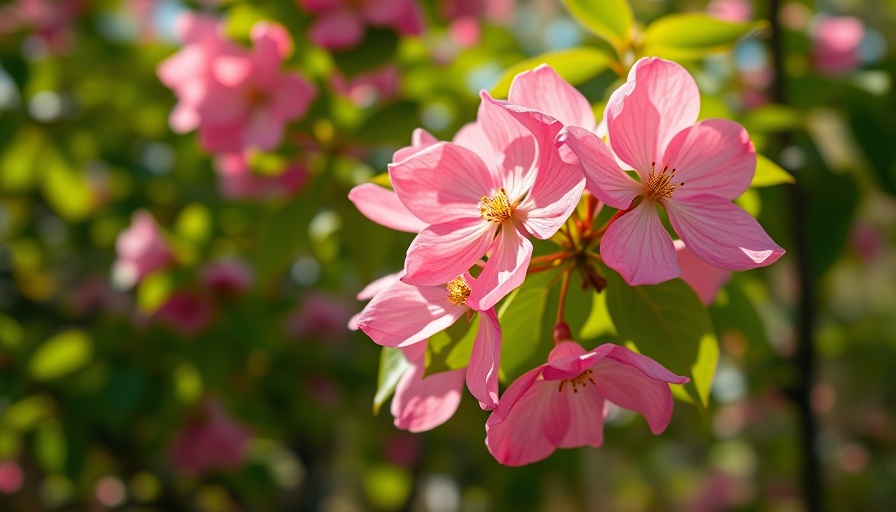
The Flowering Dogwood: A Landscape Jewel
The flowering dogwood (Cornus florida) stands out as more than just the state tree of Missouri; it's a beloved ornamental tree cherished across North America. With its lovely leaves, stunning blooms, and unique form, it's no wonder that gardeners consider it a prime candidate for their landscapes. When properly cultivated, the flowering dogwood not only beautifies your space but also supports local wildlife, becoming a sanctuary for birds and pollinators alike.
Unveiling the Elements of Care
Caring for a flowering dogwood is an enjoyable journey for any plant parent. With its hardiness in USDA zones 5 to 9, it’s well-suited for a variety of climates. However, this tree thrives best in moist, fertile soil with slightly acidic to neutral pH levels. It’s important to choose a location with partial shade to full sun, ensuring that your dogwood receives ample sunlight to flourish, especially during its vibrant spring bloom.
Cultivars Worth Considering
When choosing a flowering dogwood, several cultivars can cater to specific desires in landscaping. Varieties like 'Cherokee Brave' and 'Kousa' not only add diversity with differing flower styles but are also highly resistant to common diseases that affect the species. Incorporating these cultivars will enrich your garden design, showcasing stunning differences in bloom times and fall colors.
Strategic Maintenance for Longevity
To ensure your flowering dogwood remains healthy and vibrant, regular maintenance is key. This includes adequate watering, especially during dry spells, and mulching to retain soil moisture while suppressing weeds. Inspect your tree for pests such as the dogwood borer and scale insects, which can be detrimental if not managed early. Employing organic gardening techniques, like introducing beneficial insects, can help maintain the health of your tree while keeping it eco-friendly.
Propagation: Sharing the Beauty
Sharing the beauty of the flowering dogwood can be done through propagation, a rewarding process that deepens your connection with this stunning tree. Whether through seeds, cuttings, or grafting, you can expand your collection or gift a dogwood to a friend. For those who choose to grow from seeds, patience is necessary as it can take time for seeds to germinate and mature.
Embracing the Environmental Benefits
Beyond aesthetics, flowering dogwoods offer significant environmental benefits. They provide crucial habitats for birds, butterflies, and other pollinators. By planting dogwoods, you contribute to local biodiversity, creating a thriving ecosystem right in your backyard. Furthermore, these trees can improve air quality and provide shade, creating a more pleasant environment for families and wildlife alike.
Inspiration for Your Garden Design
Incorporating flowering dogwoods into your landscape can transform the aesthetic and atmosphere of your outdoor space. Imagine a backyard adorned with these graceful trees casting dappled sunlight over flower beds and seating areas. To maximize your garden design, consider pairing dogwoods with wildflowers or shrubs that bloom at different times, ensuring there’s always color and life. Elements like garden edging can help define spaces and showcase the beauty of your flowering dogwood. Implementing water features may also attract wildlife, making your garden even more of a natural haven.
Your Path to Successful Gardening
As a gardener, sowing the seeds of knowledge is as essential as planting the trees themselves. By understanding the unique needs of the flowering dogwood, you set a strong foundation for a lush and thriving garden. Keep learning, experimenting, and nurturing your passion for gardening as each season brings new opportunities. Grow not just plants but also a deeper connection with nature and community.
By nurturing a flowering dogwood, you embrace a rich history and contribute to the living art of your community while enjoying its many gifts. So, roll up your sleeves, dig in, and let your garden flourish with splendid beauty.
 Add Row
Add Row  Add
Add 




Write A Comment